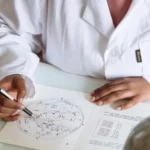Women in science: do you know the 17 women awarded a Nobel Prize?
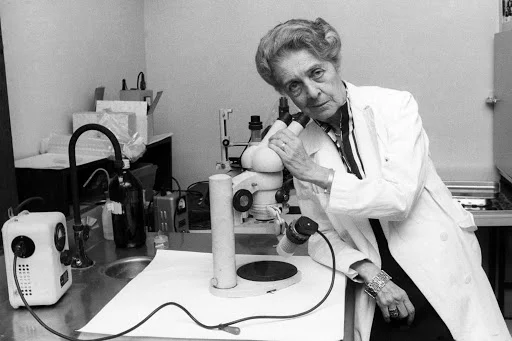
To date, only 17 women have seen their scientific work crowned with the Nobel Prize. Marie Curie was the first, in 1903 and 1911, followed by her daughter Irène Joliot-Curie in 1935, but the others remain in the shadows. You may know 2008 award-winning biologists Françoise Barré-Sinoussi, Barbara McClintock (1983) and Rita Levi-Montalcini (1986), but have you heard of Linda Buck, Ada Yonath, Elizabeth Blackburn or Youyou Tu? Hélène Merle-Beral’s book sheds light on the often surprising trajectories of these women who have achieved excellence in an environment that was and remains largely male.
Summary
Marie Curie, Nobel Prize in Physics in 1903
1️⃣ Marie Curie, Nobel Prize in Physics in 1903 jointly with Pierre Curie and Henri Becquerel for their research on radiation. Then Nobel Prize in Chemistry in 1911 for her work on polonium
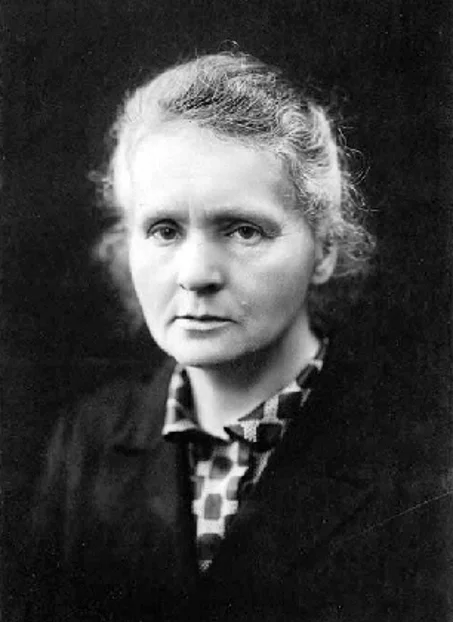
The first woman to obtain this award and the only person to receive it in two different disciplines, she will have turned the world of science upside down. Polish scientist naturalized French, she will be one of the outstanding figures of our History. She is at the origin of the discovery of radioactivity and is a pioneer in this field.
When a journalist asks Marie Curie: “How does it feel to marry a genius?” Her answer: “Go and ask my husband”. Her example made it possible, from the beginning of the 20th century, to revalue the role of women, in science but more generally in the world of work.
“Life is not easy for any of us. But what, you have to have perseverance, and above all self-confidence. You have to believe that you are gifted for something, and that this thing must be achieved at all costs.”
Irène Joliot-Curie, Nobel Prize in Chemistry in 1935
2️⃣ Irène Joliot-Curie, Nobel Prize in Chemistry in 1935 for the discovery of induced radioactivity and artificial radioactivity, together with her husband, Frédéric Joliot-Curie
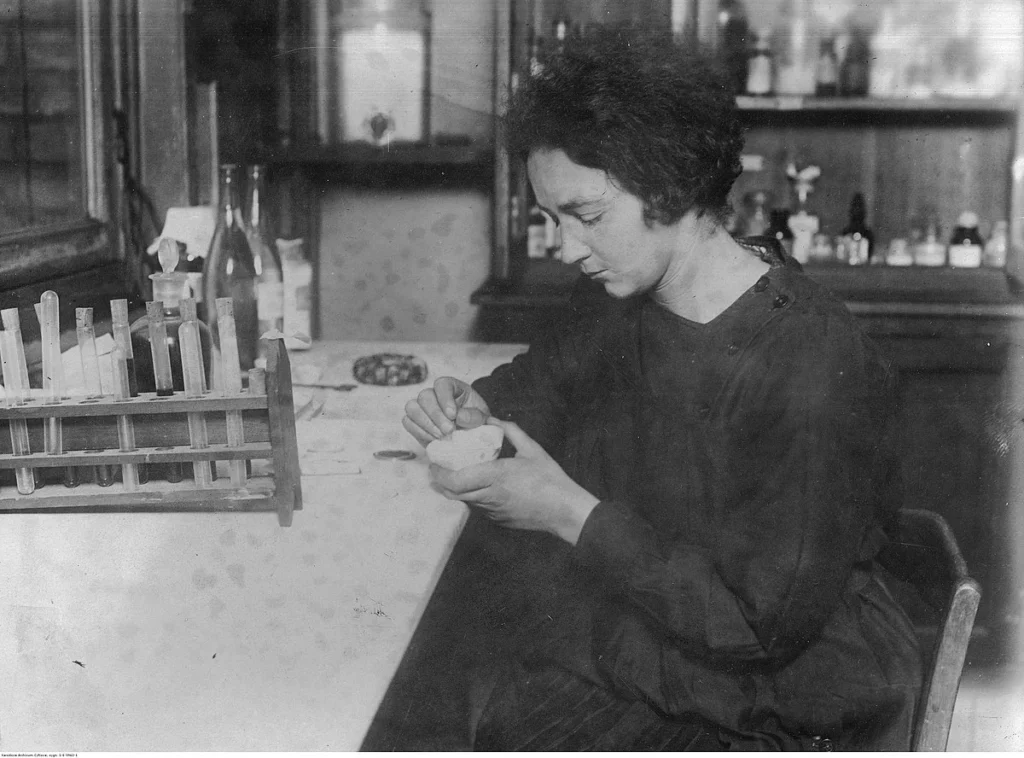
Daughter of Pierre and Marie Curie, she was one of the first three women members of a French government, becoming Under-Secretary of State for Scientific Research, under the Popular Front in 1936.
In 1946, she became director of the Radium Institute and participated in the creation of the Atomic Energy Commission, where she served as commissioner for six years. She obtains the chair of general physics and radioactivity previously occupied by her mother.
Irène Joliot-Curie died on March 17, 1956 in Paris of leukemia resulting from overexposure to radioactive radiation during her work, probably also when she was assisting her mother on the Great War front to x-ray the wounded in order to help surgeons.
“Among the conquests of feminism, there is none more important than the right for women to obtain the jobs for which they are qualified by their knowledge and aptitudes.”
Gerty Cori, Nobel Prize in Medicine in 1947
3️⃣ Gerty Cori, Nobel Prize in Medicine in 1947 (with her husband Carl) for her work on carbohydrate metabolism
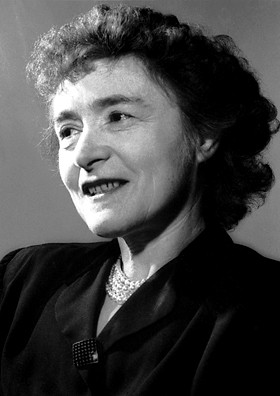
Of Austro-Hungarian origin, she obtained her doctorate in medicine in 1920 at the German University of Prague. In 1922, she and her husband emigrated to the United States, after the latter obtained a position as a biochemist. At a time when misogyny is very present in the United States and despite 11 articles published alone and 50 in collaboration with her husband, Gerty Theresa Cori only obtains secondary positions. At the University of Rochester, her husband is even advised not to “ruin his career” by publishing with her.
In 1947, she finally shared with her husband the Nobel Prize in Medicine for “the discovery of the process of glycogen conversion” after their work on the regulation of blood sugar and the Cori cycle, which links the metabolism of muscle to that of the liver via lactic acid, released by the muscle and transformed into glucose by the liver. She thus becomes the third woman and the first American to receive a Nobel Prize.
“For a researcher, the unforgettable moments in his life are those rare moments that come after years of painstaking work, when the veil on the secret of nature suddenly seems to be lifted and what was dark and chaotic appears in a light and a clear and beautiful model.”
Maria Goeppert-Mayer, Nobel Prize in Physics in 1963
4️⃣ Maria Goeppert-Mayer, Nobel Prize in Physics in 1963 for the discovery of the layered structure of the atomic nucleus
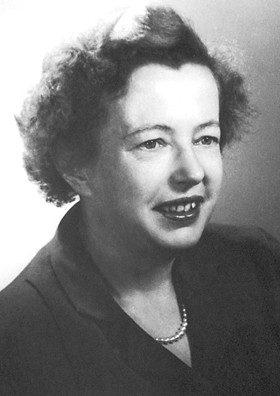
Born in 1906 in Germany, Maria Goeppert studied in Göttingen, where she obtained her doctorate in theoretical physics in 1930 under the supervision of Max Born. She married the American physico-chemist Joseph E. Mayer, who was then the assistant of James Franck (Nobel Prize in Physics in 1925) and emigrated with him to the United States.
Johns Hopkins University in Baltimore welcomes them (but without salary for her) and she collaborates there with Karl Herzfeld on the physico-chemistry of organic molecules.
It was not until 1946 that she was recognized as a researcher by the Argonne National Laboratory, near Chicago, where she learned about nuclear physics. She remained in Chicago until 1960 and obtained her most famous results there, in particular the layer model of the atomic nucleus, which earned her the Nobel Prize in Physics in 1963 with Johannes Hans D. Jensen and Eugene Wigner.
“Winning the award wasn’t as exciting as doing the job itself.”
Dorothy Crowfoot-Hodgkin, Nobel Prize in Chemistry in 1964
5️⃣ Dorothy Crowfoot-Hodgkin, Nobel Prize in Chemistry in 1964 for her work on X-ray crystallography in biochemistry
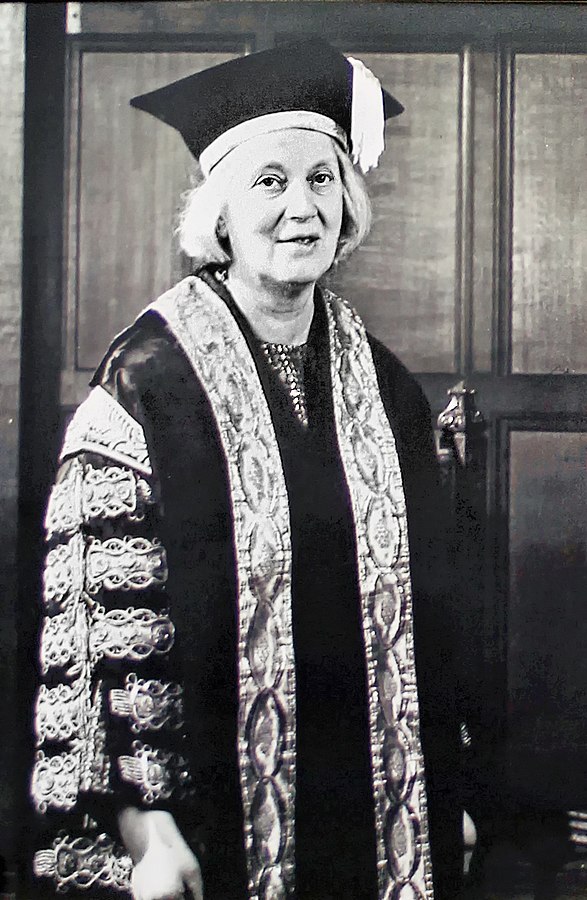
Dorothy Hodgkin, born in 1910 in Cairo and developed a real passion for chemistry from an early age. Her mother fostered her fondness for science in general and her education enabled her to attend Somerville College to study chemistry, then one of Oxford’s schools reserved for girls. She also studied at the University of Cambridge, where she learned about the potential of X-ray diffraction to determine the structure of proteins.
In 1936, she became a researcher at Somerville College, a position she held until 1977. In 1960, she was even appointed Wolfson Research Professor at the Royal Society, which meant that she enjoyed long-term support for her research and collaboration in UK institutions. She also directed the International Union of Crystallography from 1972 to 1975.
Insulin is one of her main research topics. She began her work in 1934 when she was offered a sample of insulin crystals. This hormone fascinates her with its complexity and broad effects in the body. Dorothy considers discovering the structure of insulin to be her greatest discovery.
She received numerous distinctions throughout her life: Nobel Prize in Chemistry in 1964, the Copley Medal awarded by the Royal Society in 1976, the Order of Merit in 1965, the Lomonosov Medal by the USSR in 1982 and the Lenin for Peace in 1986. She was also made Chancellor of the University of Bristol from 1970 to 1988.
Rosalyn Yalow, Nobel Prize in Medicine in 1977
6️⃣ Rosalyn Yalow, American physicist and doctor, won the Nobel Prize for Medicine in 1977, which she shared with French endocrinologists Roger Guillemin and Polish Andrzej Wiktor Schally
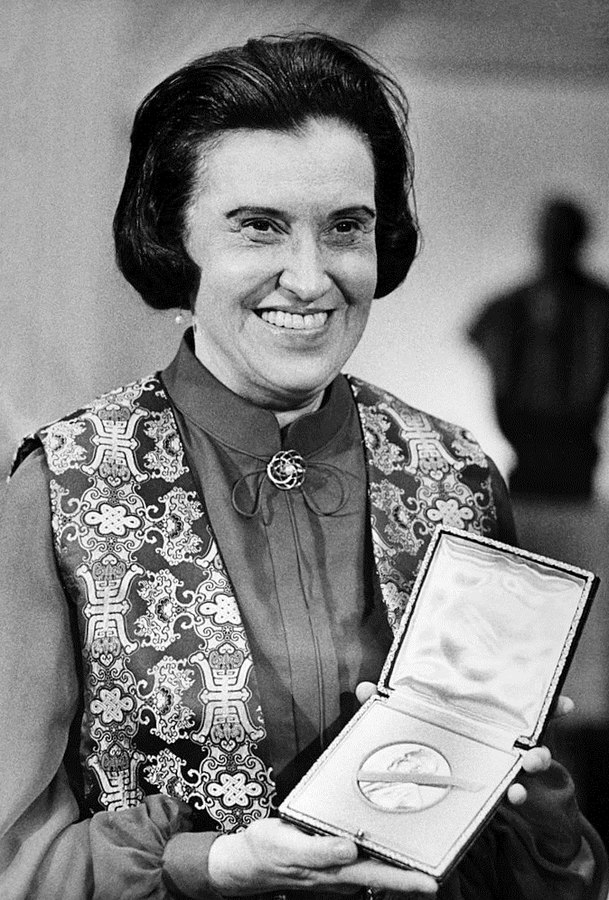
Born in 1921 in New York to modest parents, Jewish immigrants from Germany and Eastern Europe, Rosalyn Yalow remembers having been a “stubborn and determined” child. Very early on, she was interested in mathematics, then in chemistry. At university, she is passionate about physics.
In 1939, Rosalyn was 19 when she discovered the biography of Marie Curie: “A book that any woman who is destined for science should have on her bedside table”. Alongside Solomon Berson, she has devoted her career to perfecting the principle of radio-immunology assays, a very sensitive technique that makes it possible to measure minute quantities of biologically active substances.
“We must believe in ourselves like no one else believes in us, we must meet our expectations with the skill, courage and determination to succeed.”
Barbara McClintock, Nobel Prize in Medicine in 1983
7️⃣ Barbara McClintock, Nobel Prize in Medicine in 1983 for the discovery of mobile genetic factors called transposons
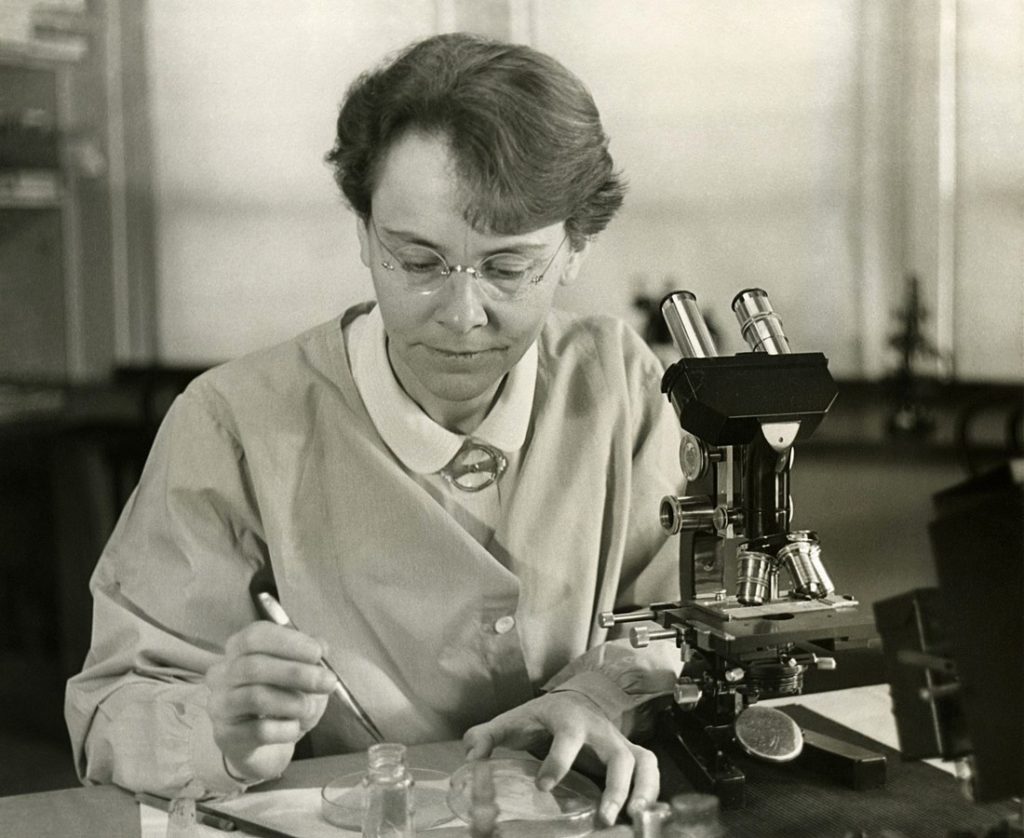
Barbara McClintock was born in 1902 in the United States. Very quickly interested in science, she wanted to continue her studies at Cornell University, but this idea displeased her mother who considered that an overeducated girl would not find a husband. Returning from the First World War, her father came to her defense and she entered the faculty of agronomy at Cornell in 1919, at the age of 17.
She devoted herself to the study of maize genes to understand how the colors of the grains are transmitted from one generation to the next and obtained her doctorate in 1927. Following her studies, she discovered that her university would not hire female teacher. She first went to Caltech where she would be the first woman to carry out postdoctoral research. Then she was hired at the University of Missouri.
As early as the 1940s, McClintock demonstrated how genes are responsible for the activation or not of physical characteristics. But it was only in 1983 at the age of 81 that she received the Nobel Prize in Medicine for the discovery of “mobile genetic elements”, more than 30 years after her initial discovery of the phenomenon of control elements.
“If you know you’re on the right track, if you have that inner knowing, then no one can discourage you…no matter what they say”
Rita Levi-Montalcini, Nobel Prize in Medicine in 1986
8️⃣ Rita Levi-Montalcini, Nobel Prize in Medicine in 1986 for the discovery of nerve cell growth factors
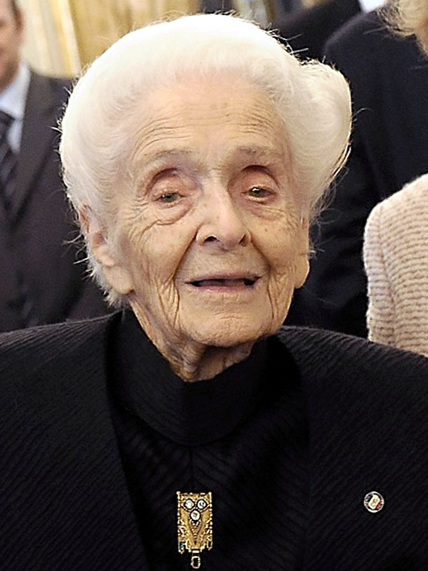
Born in 1909 in Turin, Rita Levi-Montalcini was expelled in 1938 from the University of Turin, where she had graduated in neurology and psychiatry. To escape racist laws, she set up her first laboratory in her own bedroom. In Florence during the war, she treated refugees and produced false papers. After the Liberation she left for the United States.
It is in the laboratory of Saint-Louis, in Washington, that she theorizes how a human being can be born from a single cell to succeed in becoming an architecture composed of dozens of different tissues. These are the “Nerve growth factor (NGF)”, pointing the way to each segment of an organism.
“I was able to make my discovery because I was the only one working in this specific area of neurology. I was alone in the middle of a jungle, I knew nothing or almost nothing. My intelligence is mediocre and my commitment a little more than mediocre. But three simple passions have governed my life: the search for knowledge, the thirst for love, and a poignant compassion for the suffering of humanity.”
Gertrude Elion, Nobel Prize in Medicine in 1988
9️⃣ Gertrude Elion, Nobel Prize in Medicine in 1988 for her discoveries in the development of new drugs
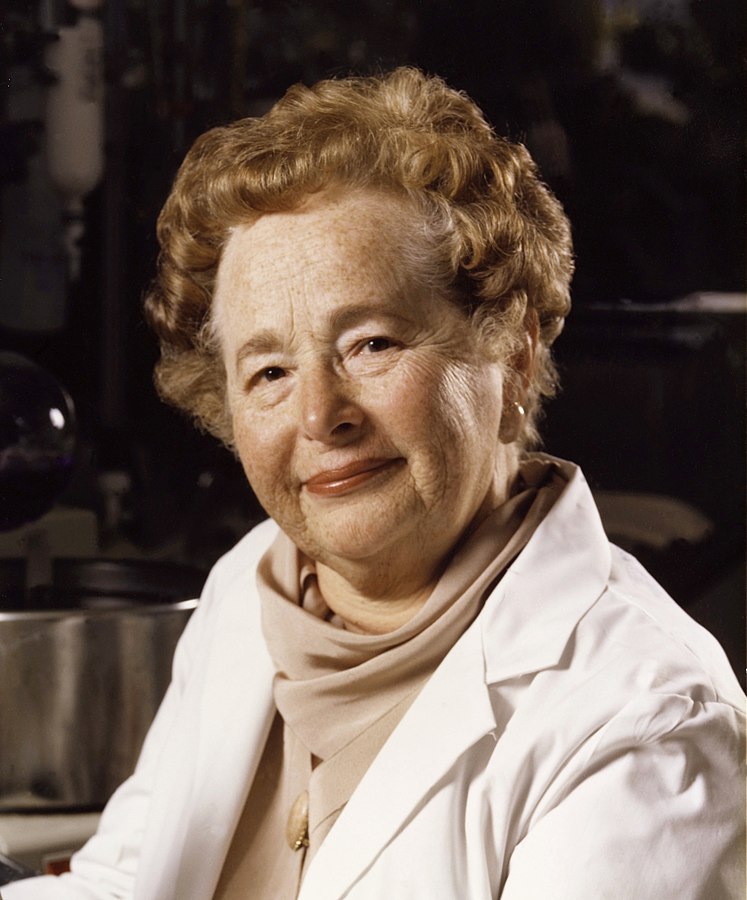
Born in 1918 in New York, Gertrude Elion began her career working as a laboratory assistant. As a woman, it is difficult for her to find a job as a researcher, so she becomes a physics-chemistry teacher in secondary schools.
The mobilization of men during the Second World War opens up new opportunities for women who must replace them, so she begins to work as a researcher. Her work has revolutionized both pharmaceutical research and medical research. Several of its medicines are on the WHO Model List of Essential Medicines.
She was awarded the Nobel Prize for Medicine in 1988 for her major discoveries in the development of new treatments, in particular for malaria, leukemia and organ transplants and acquired immunodeficiency syndrome (AIDS).
“Don’t let others discourage you or tell you that you can’t do it. In my day, I was told that women didn’t do chemistry. I couldn’t see any reason why we couldn’t.”
Christiane Nüsslein-Volhard, Nobel Prize in Medicine in 1995
1️⃣0️⃣ Christiane Nüsslein-Volhard, Nobel Prize in Medicine in 1995 for discoveries concerning the early development of the embryo
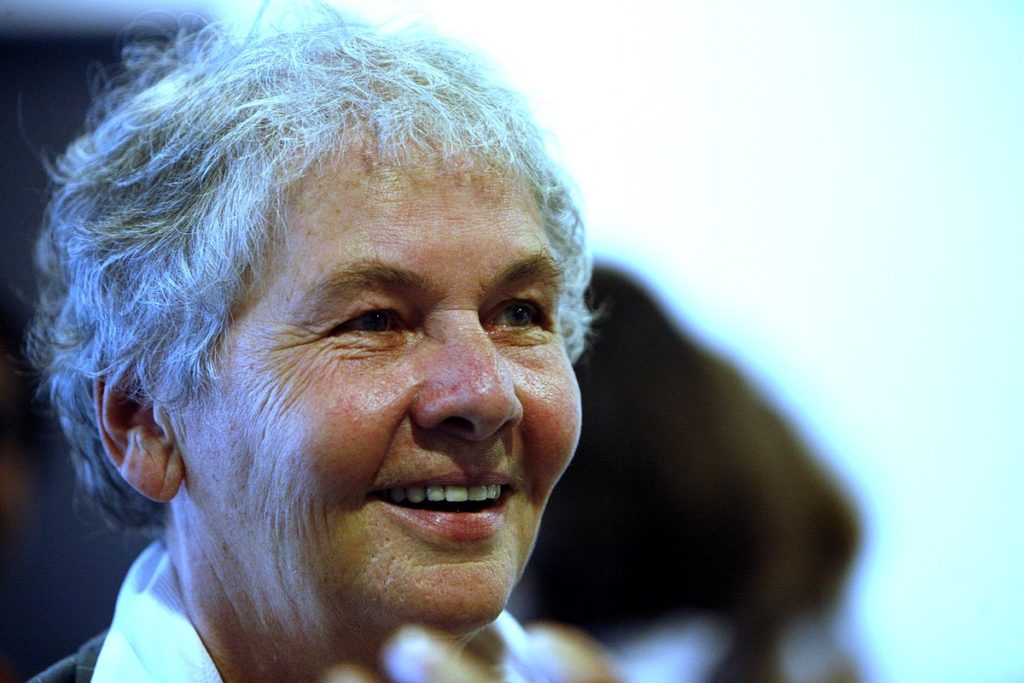
Continuing, with Eric Wieschaus, the work on the genetic control of the embryonic development of Drosophila, she identified fundamental “architect genes” which intervene, at a very early stage, in the determination of the segmentation plan of the embryo.
These genes have been found, almost identical, in all multicellular organisms, which reinforces the hypothesis of the existence of a common ancestor.
“In mathematics and science, there is no difference in the intelligence of men and women. The gene difference between males and females is simply the Y chromosome, which has nothing to do with intelligence.”
Linda Buck, Nobel Prize in Medicine in 2004
1️⃣1️⃣ Linda Buck, Nobel Prize in Medicine in 2004 for her work on the olfactory system and olfactory receptors
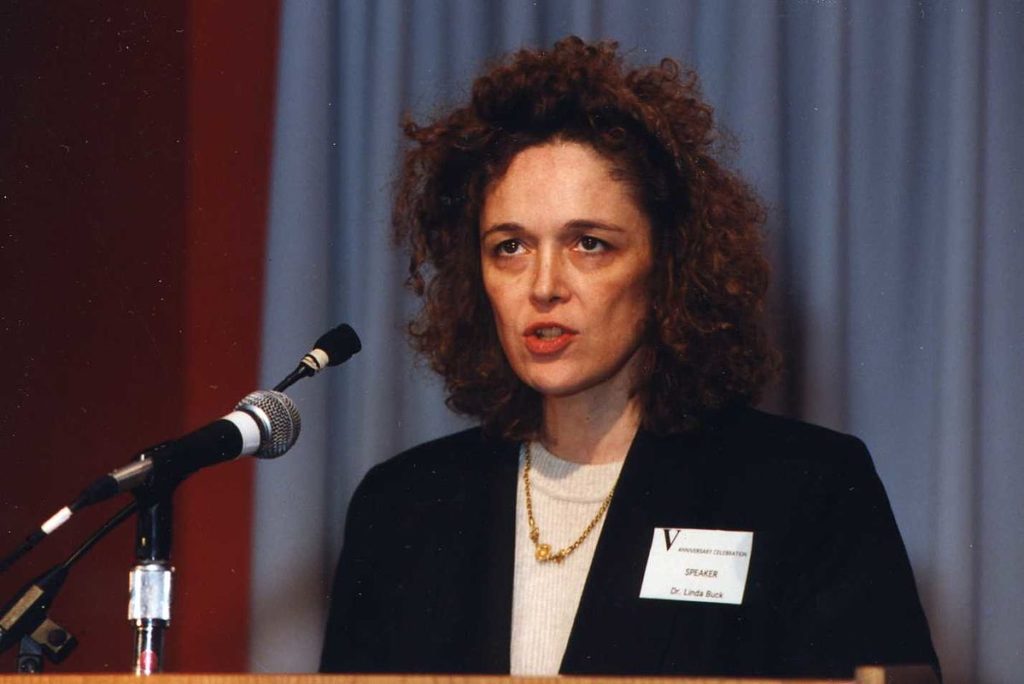
Born in 1947 in Seattle, Linda Buck never imagined she would be a scientist. Her parents loved puzzles and inventions, which led to her interest in science which, “really solves puzzles”.
Linda Buck started researching scent receptors in 1988 and worked intensively for three years. In results published in 1991, Buck and Axel identified 1,000 types of olfactory receptors in mice, located at the back of the nose, in a place called the olfactory epithelium. Receptors are protein molecules that bind to certain odorant molecules, allowing recognition of individual odors. While humans have far fewer of these receptors (350 versus 1,000), they work the same way for us.
“Do something that obsesses you, that you want to understand, because that’s where joy comes from, and that’s also, I think, where great discoveries come from.”
Françoise Barré-Sinoussi, Nobel Prize in Medicine in 2008
1️⃣2️⃣ Françoise Barré-Sinoussi, Nobel Prize in Medicine in 2008 for the discovery of the human immunodeficiency virus (HIV)
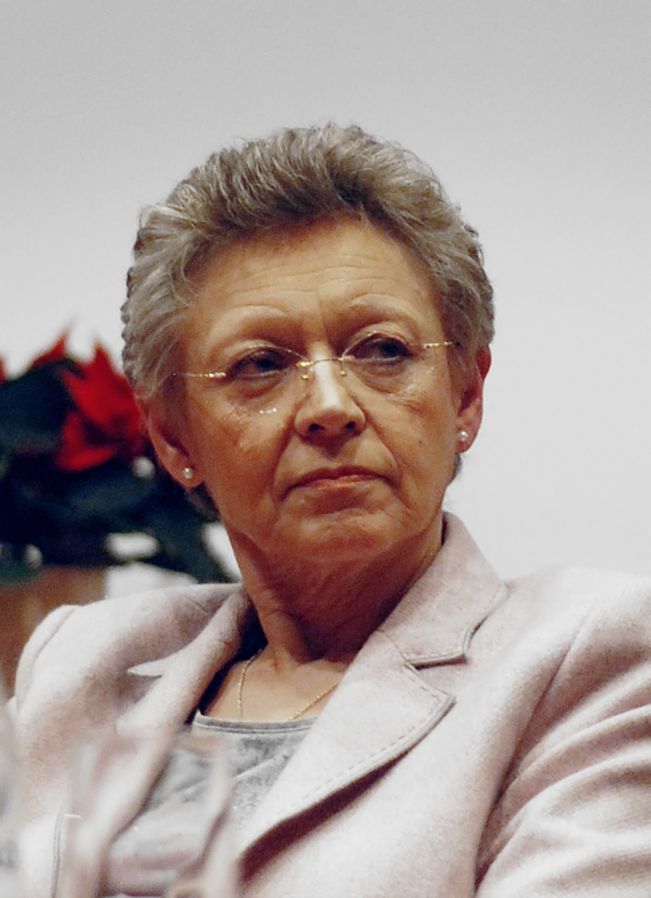
After her thesis and a stay in the United States, Françoise Barré-Sinoussi was recruited by Inserm and went to work at the Institut Pasteur in Paris. Her research mainly concerns the study of retroviruses. In 1983, she co-discovered, in a patient with AIDS, a retrovirus that would be called the human immunodeficiency virus (HIV). In 2010, she launched the IAS initiative “Toward an HIV Cure”, as part of her strong involvement in advocacy to accelerate evidence-based public health interventions on HIV/AIDS prevention, care and treatment.
At the start of the Covid-19 epidemic, she was responsible for advising the government on treatments for the coronavirus, heading a short-lived Research and Expertise Analysis Committee (CARE).
“Research is a bit like entering Carmel”.
Elizabeth Blackburn and Carol Greider, Nobel Prize in Medicine in 2009
1️⃣3️⃣ Elizabeth Blackburn and 1️⃣4️⃣ Carol Greider, 2009 Nobel Prize in Medicine for the discovery of the enzyme telomerase
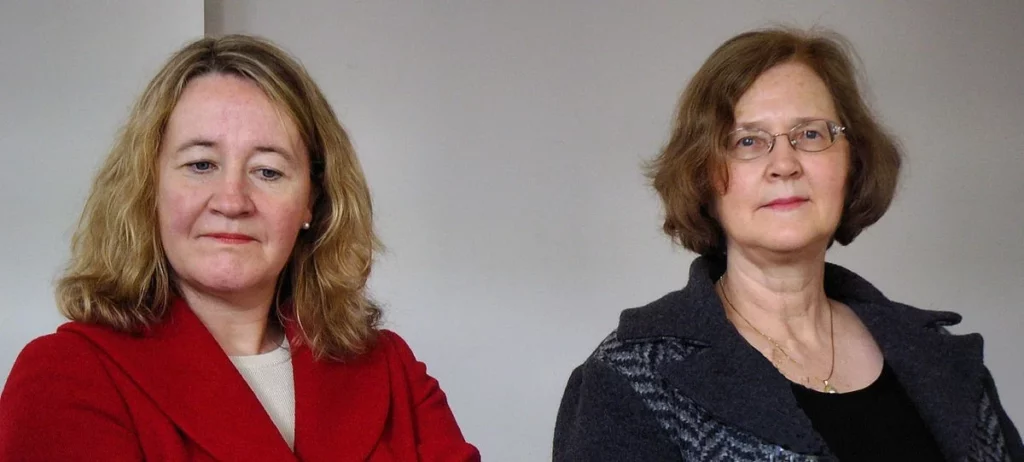
Elizabeth Blackburn, who holds dual American and Australian nationality, was born in 1948 in Australia. She teaches at the University of California, San Francisco. Carol Greider was born in 1961 in San Diego. She studied at the University of California at Santa Barbara and Berkeley where she obtained her doctorate in 1987 with Elizabeth Blackburn as her thesis supervisor.
Carol Greider and Elizabeth Blackburn identified telomerase, the enzyme that forms the DNA of telomeres. If telomeres are shortened, cells age. Conversely, if telomerase activity is high, telomere length is maintained and cell aging is delayed. This is the case of cancer cells whose lifespan is unlimited.
It has therefore been proposed to treat cancer by suppressing telomerase. Several studies are underway in this area, including clinical trials evaluating vaccines directed against cells with high telomerase activity.
“Our research is certainly not aimed at achieving immortality but rather at increasing the length of life in good health” Dr. Elizabeth Blackburn, Nobel Prize in Medicine
Ada Yonath, Nobel Prize in Chemistry in 2009
1️⃣5️⃣ Ada Yonath, 2009 Nobel Prize in Chemistry for studies on the structure and function of the ribosome also called “protein factory”
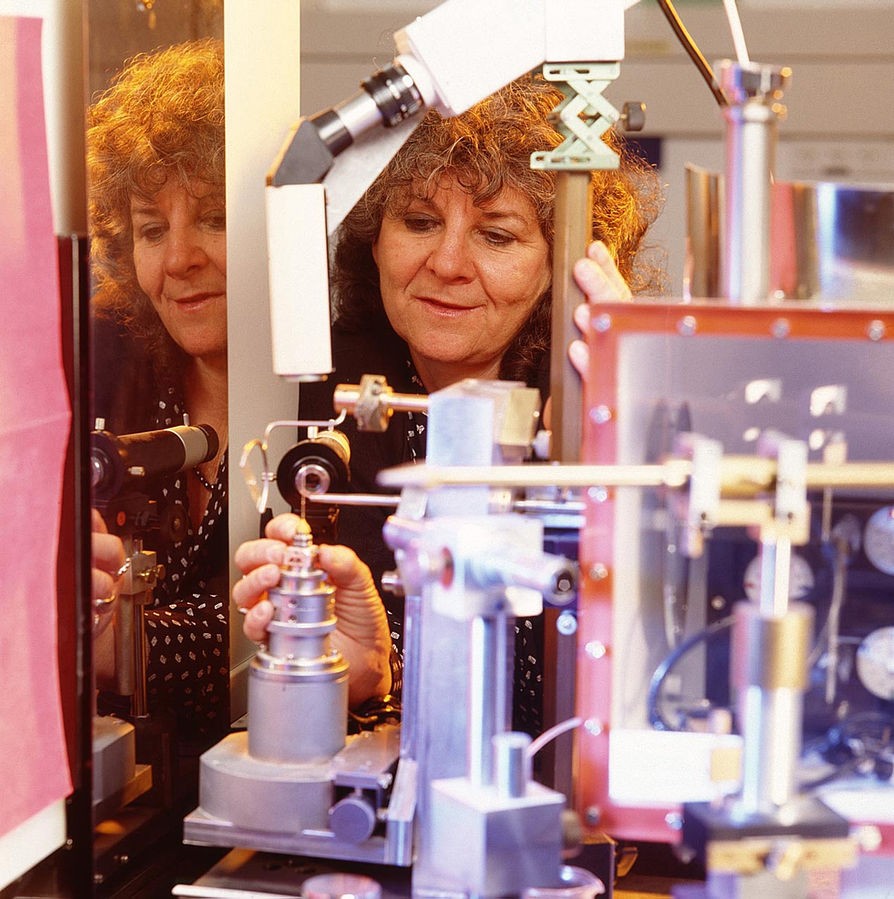
Born in 1939 in Jerusalem, Ada Yonath is the daughter of Polish Jews who immigrated to Israel in 1933. A graduate in chemistry and biochemistry from the University of Jerusalem, she obtained her doctorate in 1968 from the Weizmann Institute – where she is still today researcher – working on the structure of collagen.
After a post-doc at Carnegie Mellon University (Pittsburgh) and at MIT (Boston), she began in 1970 to work on the structure of proteins at Harvard University, in the laboratory of Professor William Lipscomb – who would obtain the Nobel Prize in Chemistry in 1976.
Among the inspirations that guided her, she cites both Marie Curie, the first woman to win the Nobel Prize in Chemistry, and her own mother, who encouraged her to nurture the curiosity that she considers decisive in her scientific career.
“Research is like climbing Mount Everest.”
May-Britt Moser, Nobel Prize in Medicine in 2014
1️⃣6️⃣ May-Britt Moser, 2014 Nobel Prize in Medicine for her work on the neuronal cells that make up the orientation system in space

May-Britt Moser and her husband Edvard, after their studies in psychology, began to be interested in the biological bases of certain behaviors. Their first findings demonstrated that only one part of the hippocampus, the dorsal part, is fundamental in moving through space. These complex functions of our behavior have long remained misunderstood. Indeed, we did not know how humans and animals can orient themselves, recognize a place and go from point A to point B, but above all what were the physical structures of the brain that perform these functions.
These new neurons, called grid cells, make up our positioning system, reminiscent of how GPS works.
“I don’t think about behaving like a man or woman of science. I think in terms of excellence in science, not in terms of gender.”
Youyou Tu, Nobel Prize in Medicine in 2015
1️⃣7️⃣ Youyou Tu, Nobel Prize in Medicine in 2015 for the treatment of malaria
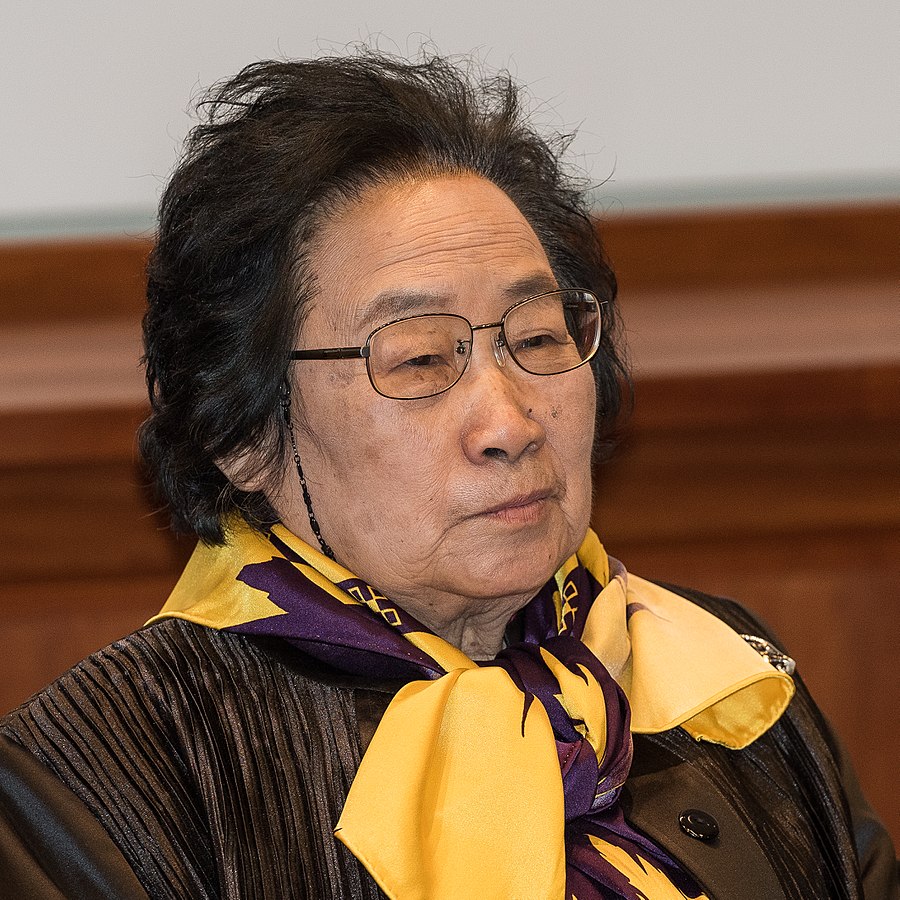
Born in 1930 in China, Youyou Tu is a researcher in pharmacy. She specializes in research on improving traditional Chinese medicine through modern scientific methods. In 1972, her research team made a major discovery in the fight against malaria with the development of an antimalarial drug with a new structure, artemisinin.
Malaria caused by the Plasmodium parasite transmitted by the bite of a mosquito, remains a major public health problem despite the means implemented for its eradication: 3.2 billion subjects – nearly half of the world’s population – are at risk of contracting malaria. In 2015, 214 million people developed the disease, and 438,000 died from it, mainly children under 5 living in sub-Saharan Africa.
Awarded in 2015 by the Nobel Prize for Medicine, this treatment from traditional Chinese medicine has saved the lives of millions of people.
“Every scientist dreams of doing something that can help the world.”
Okay Doc is a website that links researchers and companies through various services that we offer to companies: help in recruiting researchers, innovation consulting, scientific conferences on the occasion of professional events…





